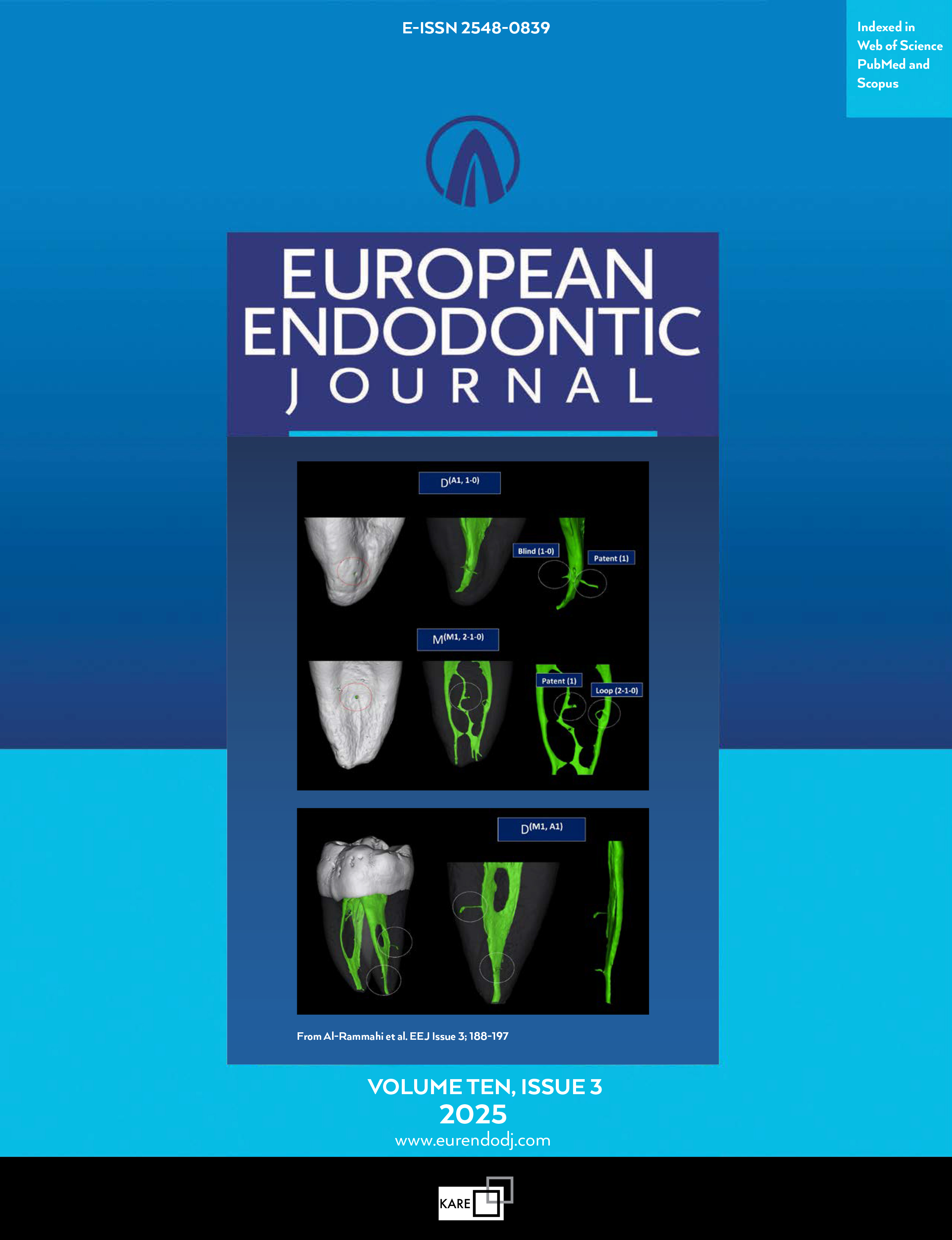Metrics
2024 IMPACT FACTOR
5 year Impact Factor
Eigenfactor Score
2024 CiteScore
Journal Citation Reports
(Clarivate 2025, JIF Rank)
Cyclic Fatigue Resistance of Replica-Like" and Original Reciprocating Instruments in Single and Double Curvatures
Celia Tarragó1, Oliver Valencia De Pablo1, Gaizka Loroño1, Antonio Conde1, Ruth Perez Alfayate1, Giampiero Rossi Fedele2, Jorge Vera3, Roberto Estevez11Postgraduate Programme in Endodontics, European University of Madrid, Madrid, Spain2Adelaide Dental School, University of Adelaide, Adelaide, Australia
3Department of Periodontics and Endodontics, University of Buffalo, New York
Objective: To compare the cyclic fatigue resistance of conventional and heat-treated "replica-like" reciprocating instruments with their original counterparts under single and double curvatures and assess tip size discrepancies against manufacturer-reported values.
Methods: Eighteen instruments were used per group for the study. Two measurements at the instrument's tip were made with a digital calliper. Cyclic fatigue resistance was evaluated under single (60°, 5 mm radius) and double curvatures (60°, 5 mm radius each) in a 37°C water bath. Time to fracture (seconds) was recorded and analysed with appropriate statistical tests (p=0.05).
Results: The tip sizes of all instruments were smaller than the value purported by the manufacturers (0.25 mm) and outside the range of values obtained, with significant differences for all groups (p<0.001). Time to fracture were as follows: Reciproc R25: single curvature: 171.5±38.9, double curvature: 133.4±47.4; Reverso Silver: single curvature: 169.0±104.8, double curvature: 57.8±20.0; Reciproc Blue R25 single curvature: 355.4±86.4, double curvature: 140.5±67.7; Reverso Blue: single curvature: 359.5±102.8, double curvature: 142.9±69.0. Reverso Silver presented with a significantly lower time to fracture overall when compared with the Blue instruments (p=0.002) and with all instruments in double curvatures (p<0.05). In single curvatures, blue files had longer times to fracture (p<0.05). When comparing single versus double curvatures, only Reciproc R25 had no significant differences regarding time to fracture (p=0.54).
Conclusion: The tip sizes of the instrument tested were smaller than what is reported by the manufacturers. The cyclic fatigue resistance of the conventional replica-like instrument (Reverso Silver) was significantly lower than the blue "heat-treated" comparators. Double curvature hastened fracture. (EEJ-2024-11-174)
Manuscript Language: English
(144 downloaded)


